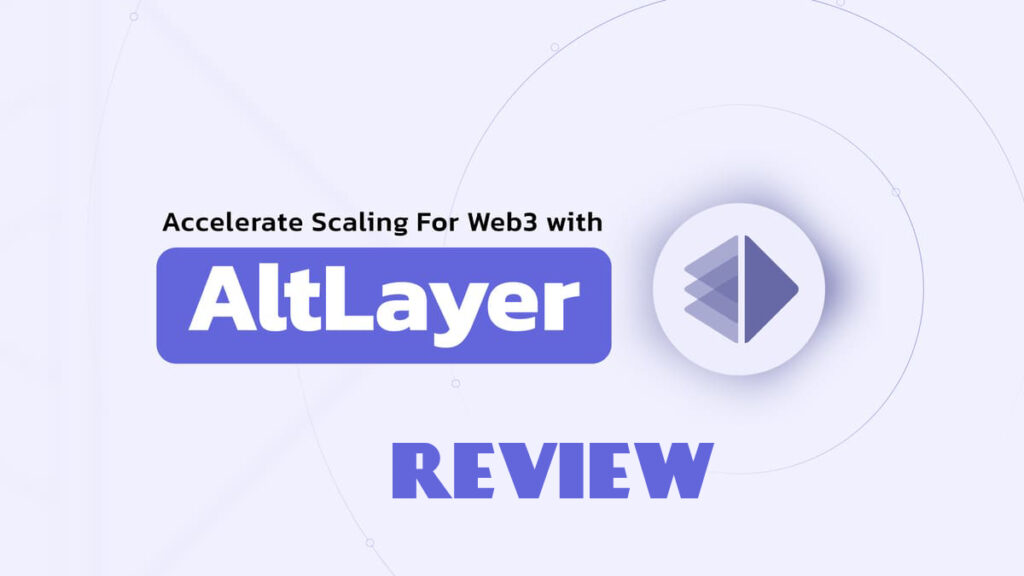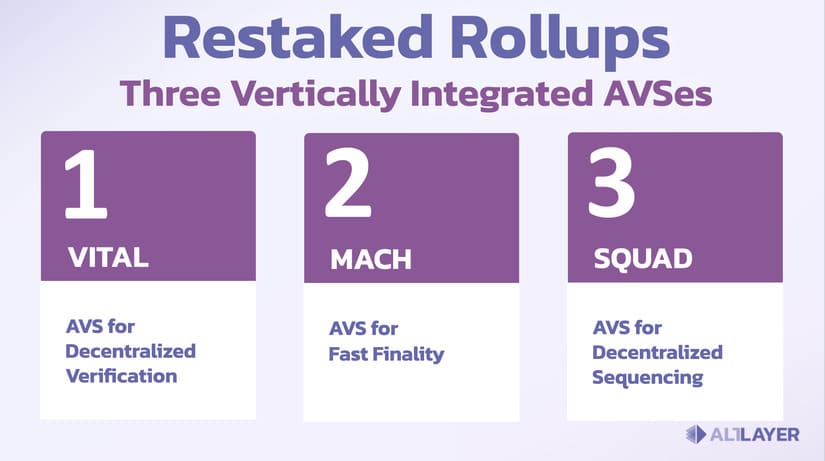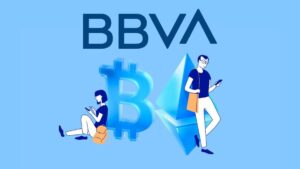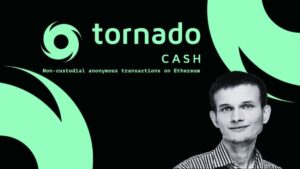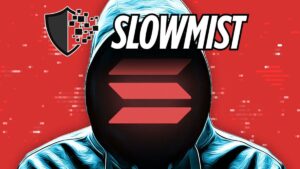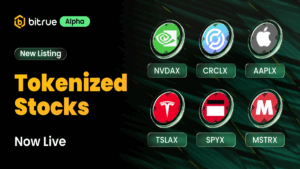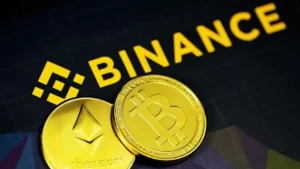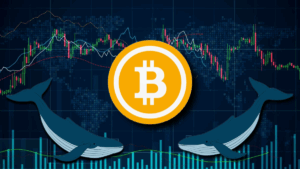AltLayer is a platform that is revolutionizing the development and management of blockchain applications, offering a scalable and efficient solution. With its ability to work across multiple networks and its support for diverse execution environments, it is already establishing itself as one of the most interesting projects in the crypto space today.
Want to know all the details? Well, this is the right article to learn in depth what AltLayer is and why it is making waves among the community. In addition, we will see the reasons that have led its ALT token to be one of the main bets of crypto investors as a long-term alternative.
Let’s get started!
What Is AltLayer?
AltLayer is a platform that simplifies the way developers create and manage blockchain applications. It serves as a versatile layer that improves scalability and efficiency, making it easier for developers to build on multiple blockchain networks.
One of AltLayer’s key features is its support for multiple execution environments, such as the Ethereum Virtual Machine (EVM) and WebAssembly (WASM). This flexibility allows developers to deploy applications on different chains without being restricted to a single one.
AltLayer’s architecture is designed to ensure security and decentralization. It introduces Restaked Rollups, a unique concept that enhances existing rollup frameworks, providing a higher level of security and faster transaction completion. This innovative approach merges the simplicity of using rollup stacks with the robustness of advanced network security.
As a second distinctive feature, AltLayer offers a simple-to-use, no-code required RaaS (Rollups-as-a-Service) platform that allows developers to easily create custom rollups tailored to their specific needs. This platform supports a wide range of SDKs and integrates with data availability layers and sequencing services, making it a comprehensive solution for blockchain application development.
Overall, AltLayer’s innovative approach to scalability and blockchain security, coupled with its easy-to-use features, positions it as a leading platform for developers looking to build decentralized applications.
Did you have questions about some of the concepts we just mentioned? Well, let’s look at each one in a little more detail.
What Are Restaked Rollups?
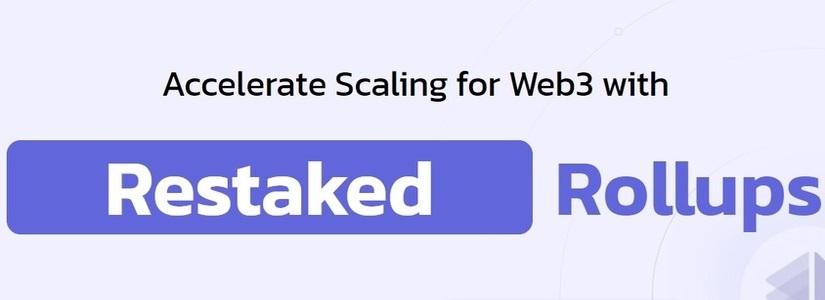
Restaked Rollups are a set of three vertically integrated Active Validated Services (AVSes) created on demand for a given rollup. These AVSes provide three key services for application rollups.
Namely, decentralized sequencing, rollup state correctness verification and faster finality, which in turn helps with rollup decentralization, better security and interoperability, while leveraging Ethereum’s trusted network through restaking. Restaked Rollups are designed with three modular components called:
VITAL (AVS for decentralized rollup state verification) MACH (AVS for fast finality) SQUAD (AVS for decentralized sequencing) which we will discuss in detail below.
What Are Rollups-As-A-Service?
Rollups-as-a-Service (RaaS) simplifies the implementation and management of application-specific rollups (AppRollups), which are a type of layer 2 scalability solution for blockchains. These services abstract away the complexities of frames and SDKs, allowing developers to quickly implement and maintain their own rollups without extensive blockchain knowledge.
RaaS providers, such as Caldera, Ankr or Dymension, offer a range of tools and services to tailor AppRollups to specific use cases. This includes custom data availability and settlement layers, tariff payment mechanisms and even native gas tokens. By working with RaaS providers, developers can focus on building their applications rather than dealing with the complexities of blockchain infrastructure.
Compared to deploying directly on public Layer 1 blockchains such as Ethereum, using RaaS offers benefits in terms of performance, cost and customization. RaaS enables faster block times and lower transaction costs, as each AppRollup operates independently. In addition, RaaS providers offer ongoing support and maintenance of the infrastructure, ensuring the smooth operation of the rollup over time.
In general, RaaS provide a middle ground between the security of Layer 1 blockchains and the scalability and customization of Layer 2 networks. They allow developers to leverage the security of a base layer while enjoying the flexibility of a dedicated application chain, making it an attractive option for implementing blockchain applications.
How does AltLayer work?
AltLayer works as a scalable solution for blockchain networks, addressing the challenges of congestion and high fees. Unlike traditional blockchain architectures, AltLayer implements sidechains to divert transactions to secondary layers, enabling near-instantaneous settlement processing and increased throughput.
This approach allows AltLayer to support both WASM and EVM, making it compatible with a wide range of Layer 1 beyond Ethereum Virtual Machine blockchains. AltLayer’s core components, built with Substrate, include a dedicated sequencer network called Beacon Chain, which provides sequencing services to the rollups. Overall, AltLayer’s innovative design improves scalability and opens up opportunities for diverse applications and decentralized platforms.
As we mentioned earlier, AltLayer’s Restaked Rollups are designed with three modular components called VITAL, MACH and SQUAD, let’s now look at each of them in more depth
Vital
VITAL, or Decentralized Verification, is a crucial component within the rollup ecosystem. It serves as a dedicated layer for verifying the validity of new states proposed by SQUAD operators. VITAL operates through a network of AVS-registered operators that detect and challenge any invalid state roots, ensuring system integrity.
One of VITAL’s key functions is to facilitate rapid completion through Mach’s AVS. This means that transactions can be confirmed quickly and securely, enabling almost instantaneous withdrawal of assets. In cases of disputes, VITAL traders can require SQUAD traders to provide a Zero-Knowledge Proof (ZK) for a disputed root of state, avoiding the need for lengthy bisection protocols.
In other words, VITAL plays a crucial role in ensuring the reliability and efficiency of the rollup network, providing a solid layer of verification that enhances the security and reliability of the entire system.
Mach
MACH is a fast completion layer designed to improve the speed and efficiency of transactions in Ethereum rollups. Its main goal is to ensure fast confirmation of transactions in rollups, providing cost-effective security to protect the network against potential malicious participants.
To achieve fast and secure completion, MACH verifies the validity of the states proposed by rollup operators, ensuring that they correctly follow the state transition function. MACH supports three state validity modes: pessimistic mode, optimistic mode, and validity test mode.
In pessimistic mode, each transaction is considered invalid by default and must be retransmitted, which can result in less efficient operation. In optimistic mode, the rollup operator asserts a state in MACH, and any node in the network can challenge this assertion to ensure the validity of the new state. Finally, in proof-of-validity mode, MACH acts as a decentralized verifier network to validate proofs of validity, enabling efficient verification of the validity of transactions.
Squad
SQUAD is responsible for decentralized sequencing in Ethereum rollups. In a rollup, sequencers are nodes responsible for various operations, such as aggregating, sorting and executing transactions, as well as producing pre-confirmations for transactions.
Decentralization of sequencing is crucial to avoid problems such as transaction censorship, bottlenecks or total unavailability of a centralized sequencer. SQUAD allows application developers to request sequencers for their rollups through a release platform, specifying the quantity needed and the minimum economic collateral required from each one.
Once sequencers have provided the minimum collateral required, they can begin sequencing transactions for the rollup. To facilitate the identification of sequencers, SQUAD operates as an open network for any EigenLayer AVS operator who wishes to join.
In short, SQUAD ensures decentralization of sequencing in Ethereum rollups, enabling secure and efficient network operation.
Altlayer Ecosystem
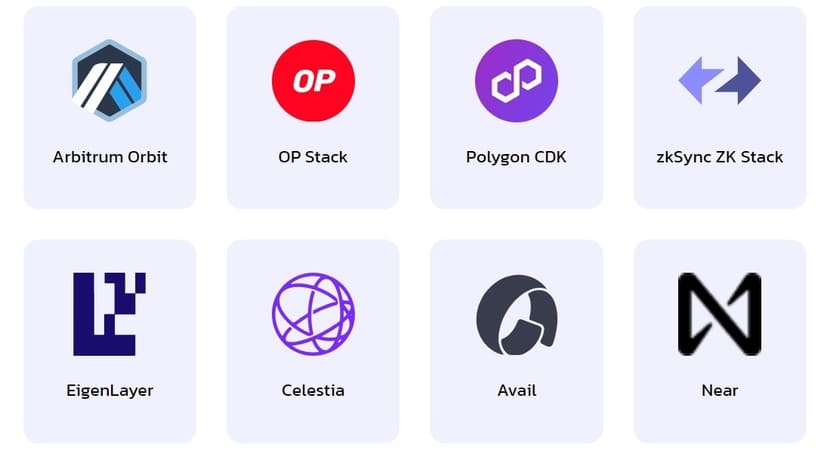
AltLayer has achieved significant partnerships and integrations that have expanded its ecosystem. This has not only improved the reliability of the project, but has managed to offer a huge amount of functionality to both developers and users. And all underpinned by the efficiency and security of the network, which we have seen throughout this article.
Let’s take a look at some of the projects and DApss that make up the AltLayer ecosystem.
- Rollup Stacks: Arbitrum, Orbit, OP Stack, Polygon CDK, zkSync, ZK Stack.
- Data Availability: Eigen Layer, Celestia, Avail, Near.
- Sequencers: Beacon Layer, Espresso, Radius
- Block Explorers: Blockscout, Dexguru, Lore, RouterScan, Dora, Nexandria, Parsec Finance, Socialscan
- Bridges: Hyperlane, Connext, Celer, Omni, Orbiter Finance, Superbridge
- Gaming: Double Jump, Oasys, Cometh, Polychain Monsters, Bladedao, Cellula, DF Archon, Galaxia Studios and more.
- NFT / Social Platforms: Avive, Asmatch, Evolv, Lemonade Social, Oveit, Chirpley.
And the list goes on and on and keeps getting longer and longer.
What Is The Alt Token?

The ALT token is the native utility token of the AltLayer ecosystem. It serves several purposes:
Staking: ALT token holders can stake their tokens to participate in the consensus mechanism and earn rewards for securing the network.
Governance: ALT holders have voting rights that govern the development and operations of the protocol.
Fees: Transaction fees, storage fees and other services within the AltLayer ecosystem are paid in ALT tokens, and operators will receive a portion of these as an incentive.
Is It A Good Idea To Invest In Altlayer (ALT)?
ALT is a token with enormous potential. Although AltLayer has not been active for long compared to projects like Cardano or Ethereum, it has already achieved significant partnerships and has managed to create a large and diverse ecosystem that brings enormous value to the entire crypto space.
While this is no guarantee that the ALT token will reflect this significant ecosystem evolution in its price, what is certain is that the fundamentals behind it are extremely solid.
Good crypto investors know that, in order to find good quality investments, they must be very mindful of the projects behind the tokens. And, in this case, AltLayer proves to have absolutely all the necessary factors to establish itself as a major player in the cryptocurrency space.
With this data, ALT can be an excellent alternative to consider for long-term investments. However, remember that this does not constitute an investment recommendation and you should always conduct your own research before investing.
Conclusion
Whether you are a blockchain developer or a cryptocurrency investor, you should closely follow AltLayer’s future developments.
Undoubtedly, the potential shown by this project puts it among the main competitors for the development of more efficient and scalable blockchain technologies. With great possibilities that its functionalities will continue to increase and its ecosystem will continue to grow.
With its revolutionary concepts of Restaked Rollups and Rollups-as-a-Service, AltLayer is becoming one of the most innovative projects in the crypto space, which may lead to the ALT token becoming one of the most valued tokens in the market in the future.



